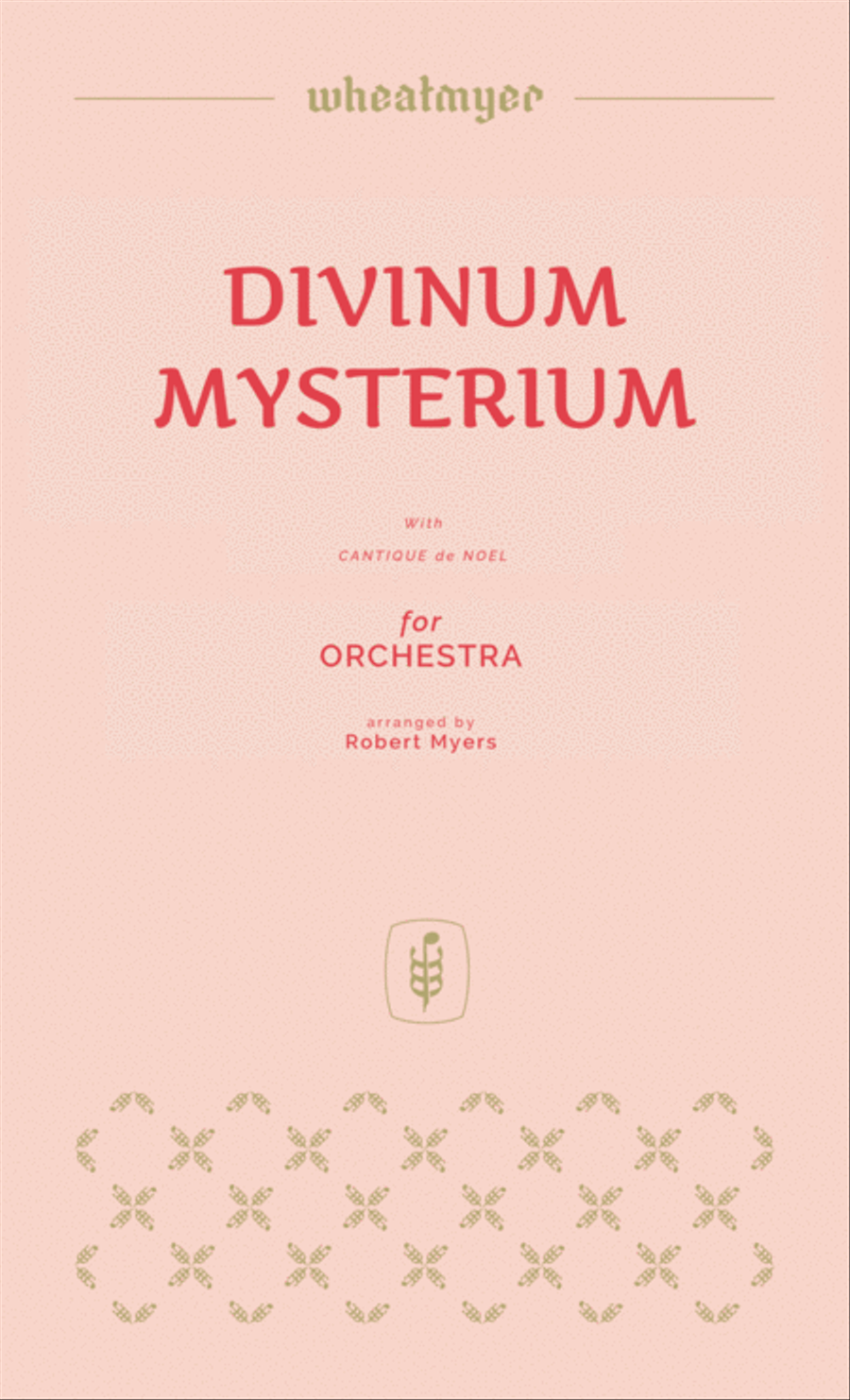Full Orchestra - Level 4 - Digital Download SKU: A0.976721 Composed by 12th Century Plainchant. Arranged by Robert Myers. Christian,Christmas,Contemporary,Sacred. Score and parts. 76 pages. WheatMyer Music #4798079. Published by WheatMyer Music (A0.976721). DIVINUM MYSTERIUM is a chant tune dating to the 12th century which is associated with the hymn, Of the Father's Love Begotten, based on the Latin hymn, Corde natus ex parentis, written by Prudentius in the late 4th / early 5th century. This is thus one of the very oldest texts and tunes still sung in our churches today. The shape and flow of this arrangement, which includes quotations from CANTIQUE de NOEL (O Holy Night) – Adolphe Adam (1844), was strongly influenced by what one writer described as the strong wave shapes of the tune. I’ve attempted to make these waves a significant feature of the piece, featured in both the constant crescendo/decrescendos and the interweaving of the two tunes. And, just as ocean waves don’t arrive in steady rhythms, these musical waves are variable – sometimes closely spaced, sometimes not, and sometimes overlapping. The unique character of each of the three major sections is implied in their headings: (1) with mystery and wonder, (2) Joyfully – a child is born, and (3) contemplative – God is with us. The opening section portrays the mystery of the trinity (the hymn text was written as an apology for the Nicene Creed) mixed with the wonder of the Creator God lying in a manger. Since the tune is derived from medieval chant, I wanted this section to reflect the loose metrical nature of that genre, so the melodic phrasing should predominate over any sense of meter up to letter C. The initial tonal and metrical ambiguity and the fractured melodic lines gradually meld into conventional tonality and clear statements of the two main themes. Don’t let the poco rit. just before C be too poco. Build a definite sense of tension in anticipation of the Presto section. The Presto section presents the first complete statement of the main theme. I felt a strong, rhythmic treatment should follow the ambiguity of the opening to reflect the joy of the Messiah’s incarnation realized. However, the gravity of the text demands avoidance of frivolity and banality. Thus, I used a combination of the long, flowing lines with a syncopated pulse and echoing rhythms to produce what I hope is a fresh but still reverent treatment of this ancient hymn – one that produces a kaleidoscope of tonal color. Arriving at the third section at letter F, the asymmetrical pulse gradually shifts into a straight 3 pattern. The slower tempo and return of the secondary theme call us to reflect on the import of God now with us. The marking of Let off the gas and coast to the end is a word picture of how the tempo should draw to a close, as would an expert helmsman allow the ship’s momentum to stop just as it taps the dock. One parting moment is provided to savor the woodwinds closing phrase from CANTIQUE de NOEL. Robert Myers S.D.G. INSTRUMENTATION Fl 1,2; Oboe 1,2; Bb Cl 1,2 ; Bsn 1,2 Hn in F 1/2, 3/4; C Tpt 1,2 (Opt Bb Tpt 1,2); Tbn 1, 2; Tuba Timpani Perc. 1 (cymbals, tam-tam, vibraphone) Perc. 2 (chimes, snare) Perc. 3 (concert toms (4), bass drum) Vln 1,2; Vla 1,2; VC; DB
